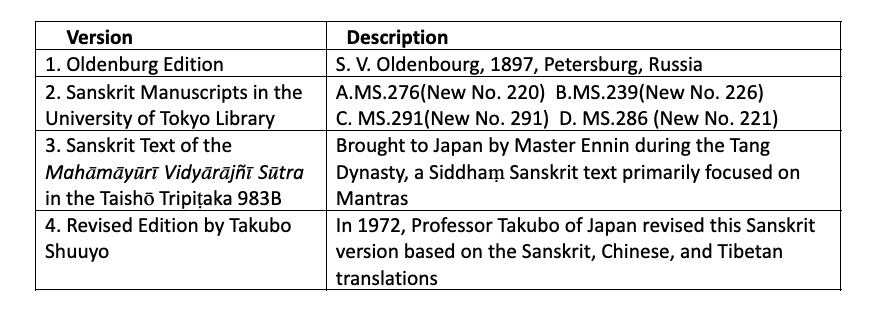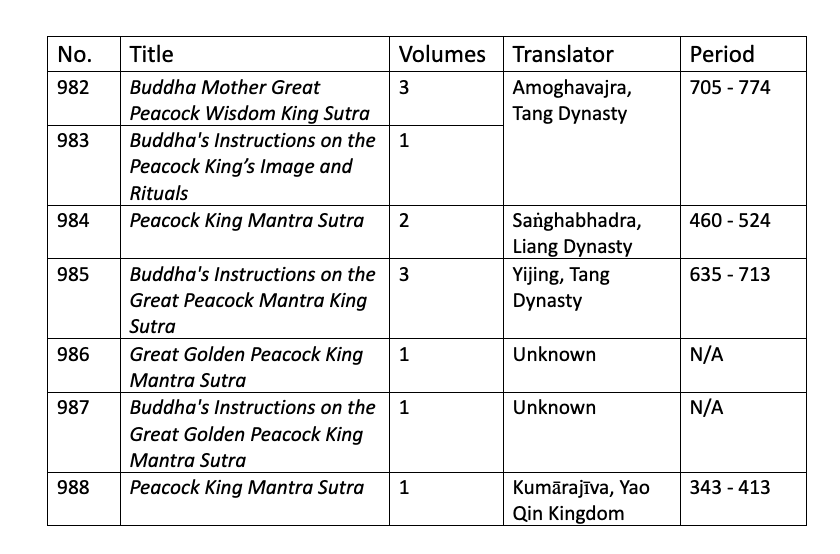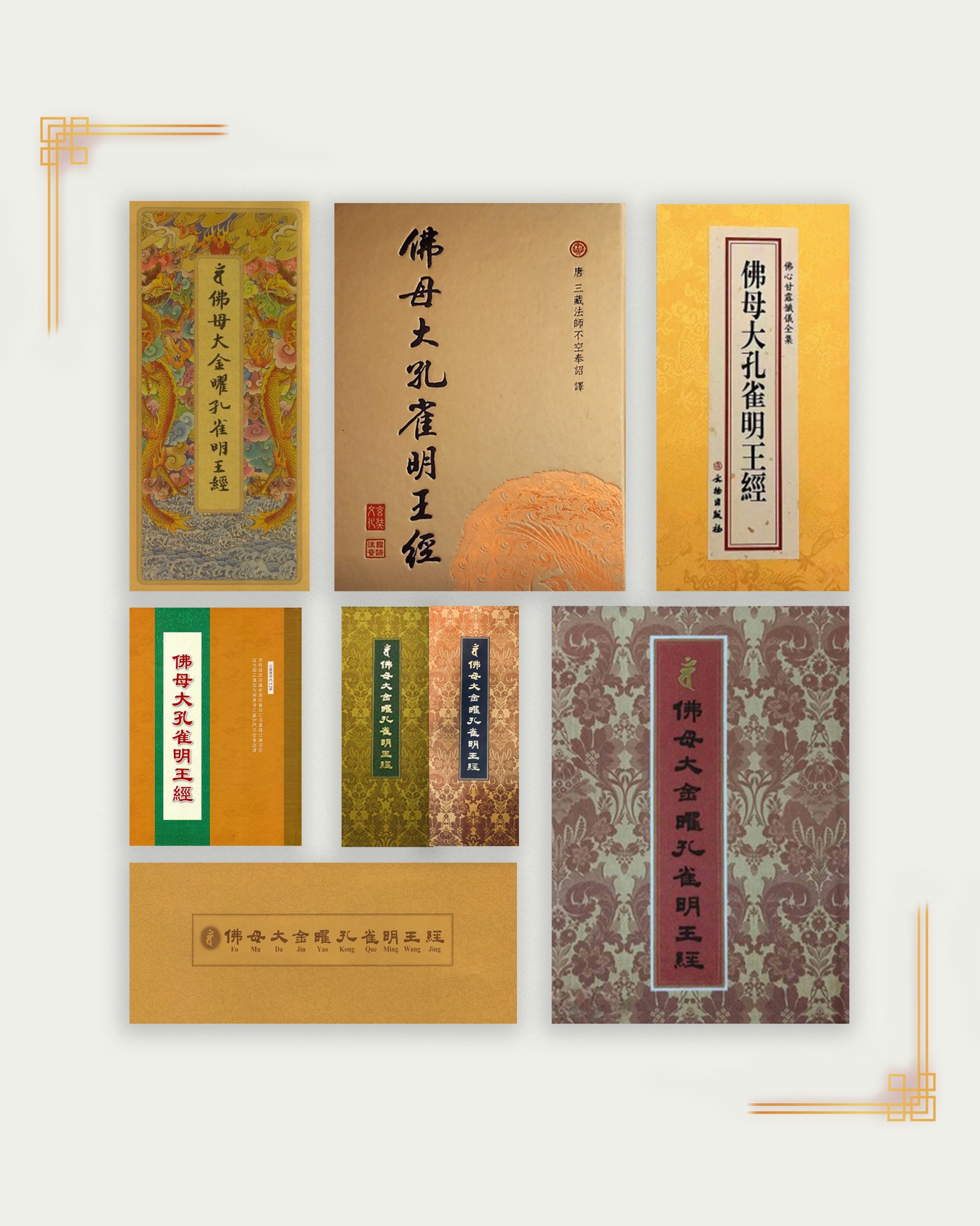Translated By Tony Qin
The Peacock Sutra (Mahāmāyūrī Vidyārājñī Sūtra) is currently available in Sanskrit, Chinese, and Tibetan translations. Due to the differences in the translators’ time periods, linguistic habits, cultures, sects, as well as inevitable transcription and printing errors, it is common to find slightly varying versions of the same text or mantra.
According to the documentation of Lin Guangming’s The Secrets of the Peacock Sutra, four common Sanskrit versions are as follows:

Three Tibetan versions are as follows:

The Chinese translations are recorded in Volume 19 of the Taishō Revised Tripiṭaka from T982 to T988. The titles, translators, and estimated periods are as follows:

Another version worth noting is the Mora (Peacock) Sutta in the Paritta of the Theravāda Pāli Canon.
Although the titles of the Peacock Sutra vary across translations, they all highlight the peacock’s ability to neutralize snake venom. Historically, the most widely disseminated version is the Buddha Mother Great Peacock Wisdom King Sutra translated by Amoghavajra Tripiṭaka during the Tang Dynasty.
In the 1970s, Elder Jianru recognized that the Chinese recitation version of this sutra had fallen out of circulation in China. He also noted its archaic characters and long mantras made it challenging to recite, so he made a solemn vow to re-typeset, proofread, and correct the text by incorporating long and short tones into the reading instructions and used symbols to distinguish between continuous and combined sounds. Meanwhile, Professor Zhuang Xiqing provided phonetic annotations of the mantras in Mandarin, Japanese, and Romanized notations to facilitate recitation. After over ten years of effort, the revised Chinese recitation version was completed and distributed.
Elder Jianru dedicated more than thirty years to promoting the Peacock Dharma. In his later years, he collaborated with Japanese Koyasan Shingon Lineage Master, Yūei Ajari(Note 1) and renowned Siddhaṃ Sanskrit(Note 2) expert Professor Lin Guangming to further revise the Peacock Sutra. This monumental undertaking was finally completed in 2010, with additional International Phonetic Alphabet annotations for recitation. This is the version of the Buddha Mother Great Golden Radiance Peacock Wisdom King Sutra we currently use for recitation, known as the Kaicheng Edition.
This recitation text is divided into four parts: the Invocation, the Upper Volume, the Middle Volume, and the Lower Volume. Its notable features include:
- Verses of praise before and after each volume of the sutra.
- The Refuge and Bodhicitta, the Mantra of Purifying the Three Karmas, the Mantra of Pacifying the Land, and the Universal Offering Mantra, added before the Invocation.
- Five mantras added after the Invocation, including the Samādhi Mudrā Mantra excerpted from Amoghavajra’s Buddha’s Instructions on the Peacock King’s Image and Rituals.
- The Mantra for Filling the Gaps, the Great Wheel Vajra Mantra, and the Seven Buddhas’ Mantra for Eliminating Sins added at the end of the sutra.
This recitation text forms a complete ritual practice. The arrangement of this edition is a testament to Elder Jianru’s lifelong study and realization of the Peacock Dharma.
Note 1: “Siddhaṃ” refers to a form of Sanskrit script, meaning “achievement”, or “auspicious achievement.”
Note 2: “Ajari” is a title for a spiritual teacher or guru. In Esoteric Buddhism, it signifies a master who teaches the Dharma.

